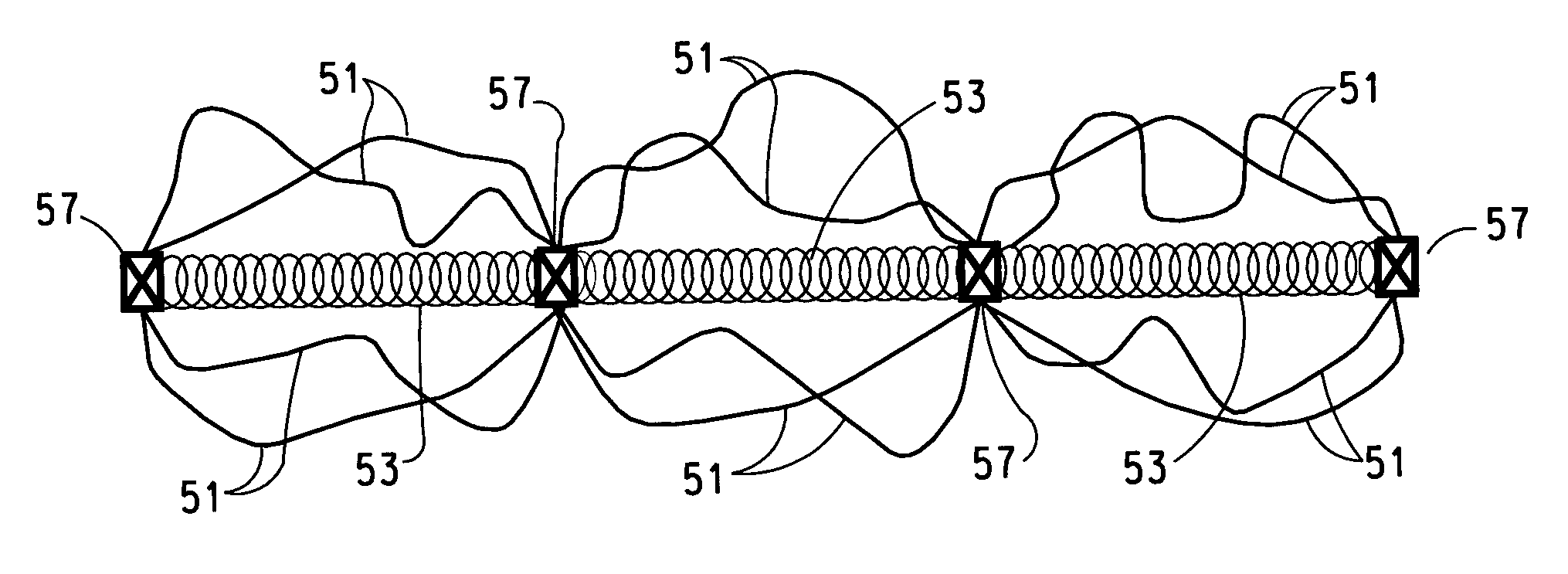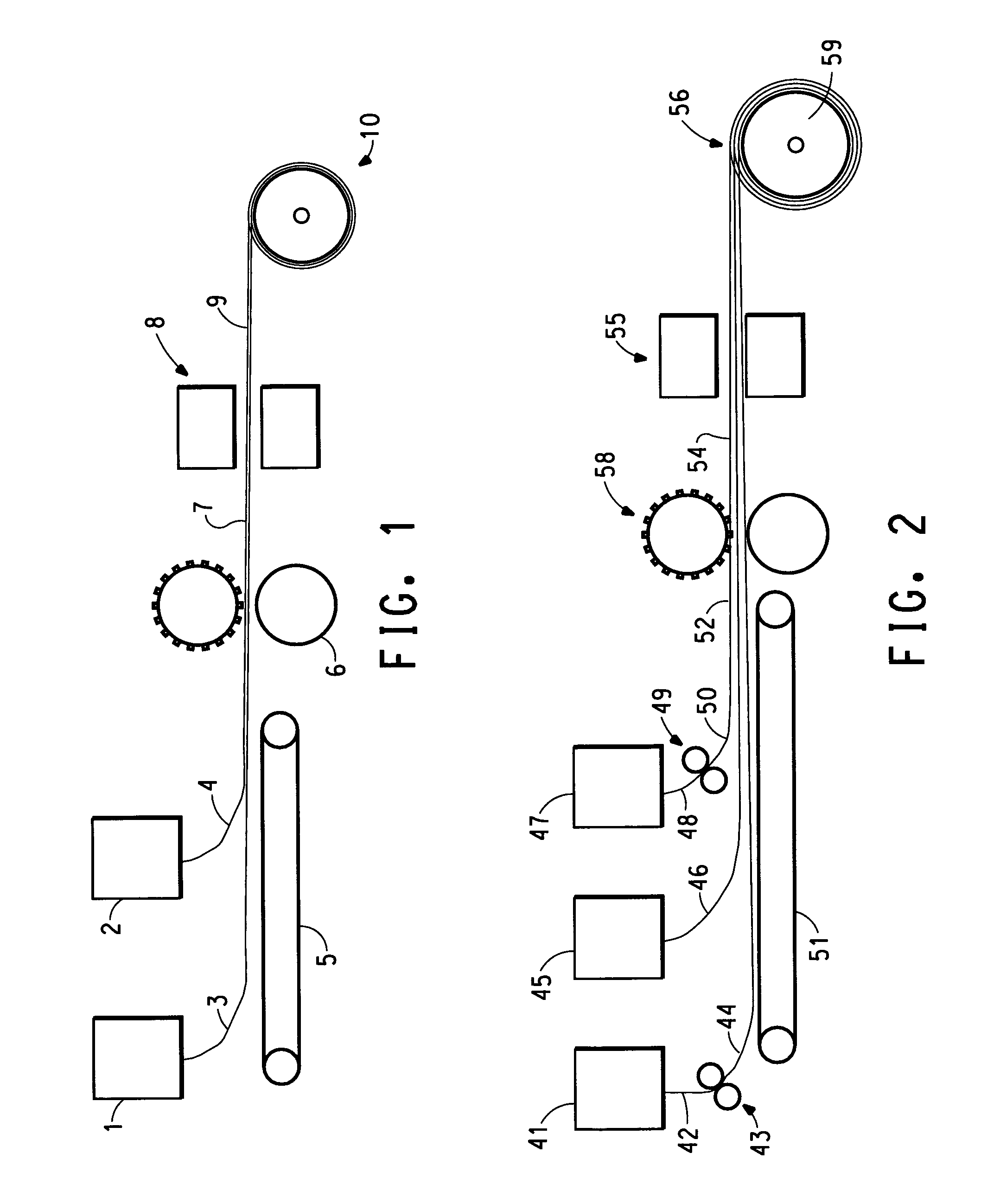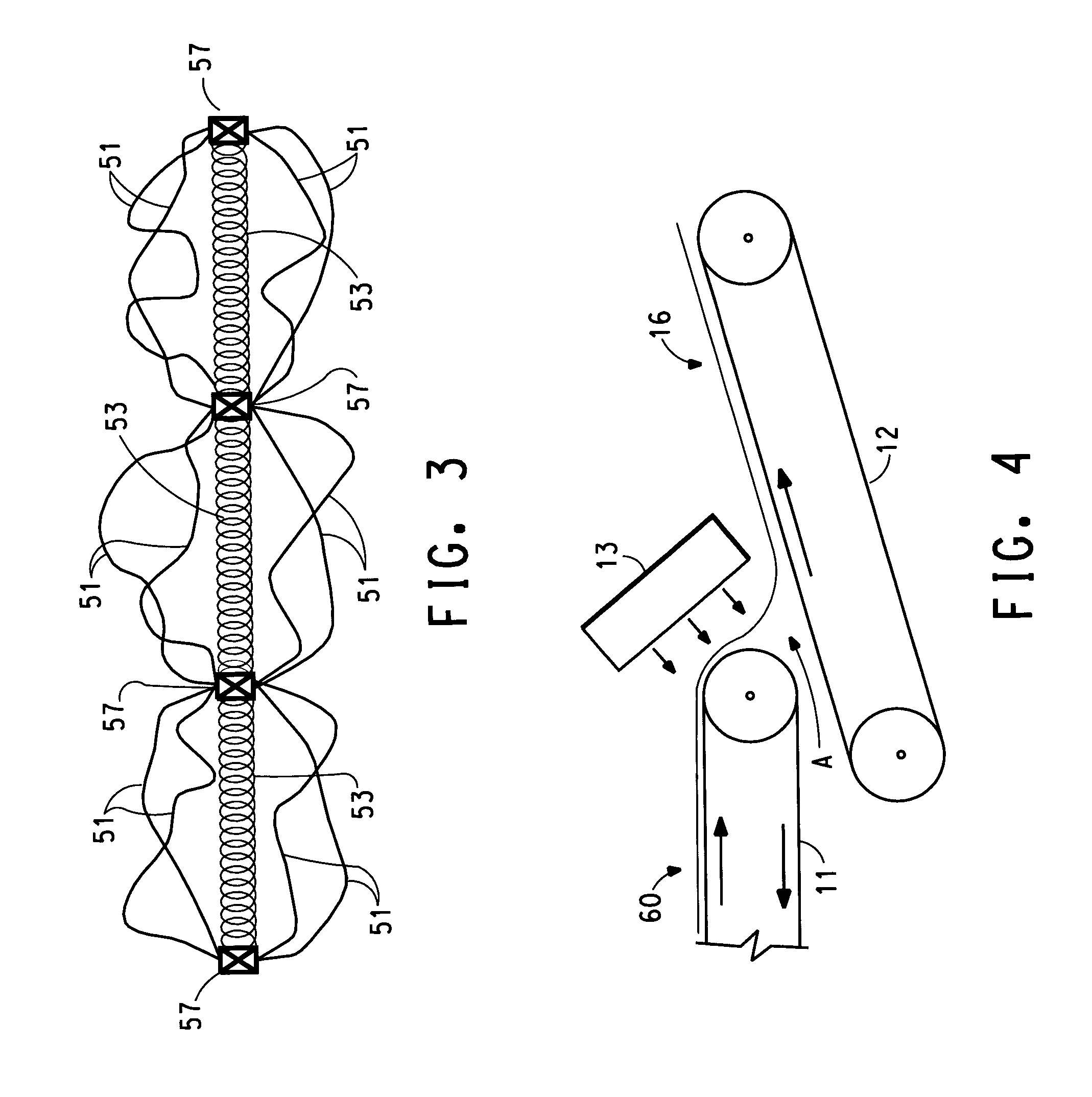Stretchable composite sheets and processes for making
a composite sheet and stretchable technology, applied in the field of stretchable composite sheets, can solve the problems of poor hand hand of stretchable nonwoven fabrics comprising spirally crimped multiple-component fibers known in the art, and the general unsuitability of elastic composite materials for some apparel end uses
- Summary
- Abstract
- Description
- Claims
- Application Information
AI Technical Summary
Benefits of technology
Problems solved by technology
Method used
Image
Examples
example 1
[0082]A carded web having a basis weight of 0.6 oz / yd2 (20.3 g / m2) was prepared from the poly(ethylene terephthalate) / poly(trimethylene terephthalate) side-by-side bicomponent staple fibers of 40 volume percent poly(ethylene terephthalate) and 60 volume percent poly(trimethylene terephthalate) prepared as described above. Two layers of this web were combined to form the spirally-crimpable layer. The spirally-crimpable layer was sandwiched between two carded webs, one MD and the second XD oriented, each having a basis weight of 0.6 oz / yd2 (20.3 g / m2) and composed of 1.5 inch (3.8 cm), 1.5 denier 2GT staple T-54 DuPont polyester. The 3-layer composite nonwoven was bonded with a calender bonder using a flat steel roll heated to 210° C. and a diamond-patterned steel roll heated to 205° C. and a calender speed of 20 yards / minute (18.3 m / min). The diamond pattern produced 225 bonds / in2 (35 bonds / cm2), with 20% bonded area, and approximately 0.70 inches (1.78 cm) center-to-center bond dist...
example 2
[0085]Filament yarns described in Example 1 were hand-laid in a random manner to form a web weighing approximately 3 oz / yd2 (101.7 g / m2). The web was placed between two spunbond Style 2250 Reemay® polyester made by BBA Corp. of Old Hickory, Tenn. Each fully-bonded spunbond layer weighed 0.5 oz / yd2 (17.0 g / m2). The composite was processed through a thermal pattern bonder equipped with a patterned roll heated to 220° C. and a flat steel roll heated to 210° C., with a loading of 150 lbs. per linear inch (263 N / cm), at 20 yd / min (18.3 m / min). The pattern of bonds was spaced at 8 / inch (3.1 / cm) with a spacing of 3.2 mm between bonds and a bonded percentage area of 29%. After bonding the product was virtually unstretchable. The product was heat treated in an air-circulating oven at 150° C. for 1 minute and allowed to relax. It shrank by approximately 10% in both directions. After shrinking the product weighed 4.6 oz / yd2 (156 g / m2) and had a machine direction elastic stretch of 15% and a cr...
example 3
[0087]Filament yarns described in Example 1 were hand-laid in a random manner to form a web weighing approximately 2.5 oz / yd2 (84.8 g / m2). The web was placed between two spunbond Style 2253C Reemay® polyester made by BBA Corp. of Old Hickory, Tenn. Each lightly consolidated spunbond layer weighed 0.5 oz / yd2 (17.0 g / m2). The composite was processed through a thermal bonder equipped with a patterned roll and a smooth steel roll, both heated to 215° C., with a loading of 500 lbs. per linear inch (877 N / cm), at 30 yd / min (27.4 m / min). The patterned roll had square bond points 0.025 inches to a side in a diamond pattern with 333 pts / sq inch with bonded percentage area of 20%. Under these conditions of point bonding, the shrinkage of the composite sheet occurred as the fabric exited the bonding roll as depicted in FIG. 7. The product weighed 4.6 oz / yd2 (156 g / m2) and had a machine direction elastic stretch of 21% and a cross-directional elastic stretch of 17%.
PUM
| Property | Measurement | Unit |
|---|---|---|
| weight percent | aaaaa | aaaaa |
| thickness | aaaaa | aaaaa |
| weight percent | aaaaa | aaaaa |
Abstract
Description
Claims
Application Information
 Login to View More
Login to View More - R&D
- Intellectual Property
- Life Sciences
- Materials
- Tech Scout
- Unparalleled Data Quality
- Higher Quality Content
- 60% Fewer Hallucinations
Browse by: Latest US Patents, China's latest patents, Technical Efficacy Thesaurus, Application Domain, Technology Topic, Popular Technical Reports.
© 2025 PatSnap. All rights reserved.Legal|Privacy policy|Modern Slavery Act Transparency Statement|Sitemap|About US| Contact US: help@patsnap.com



